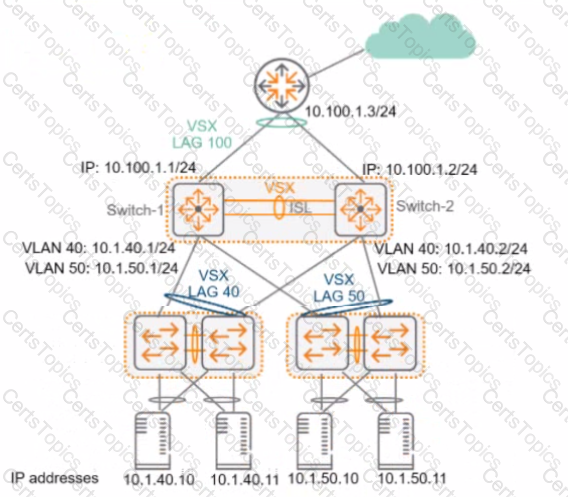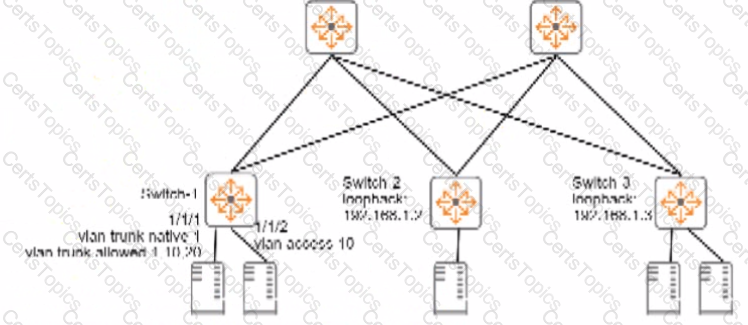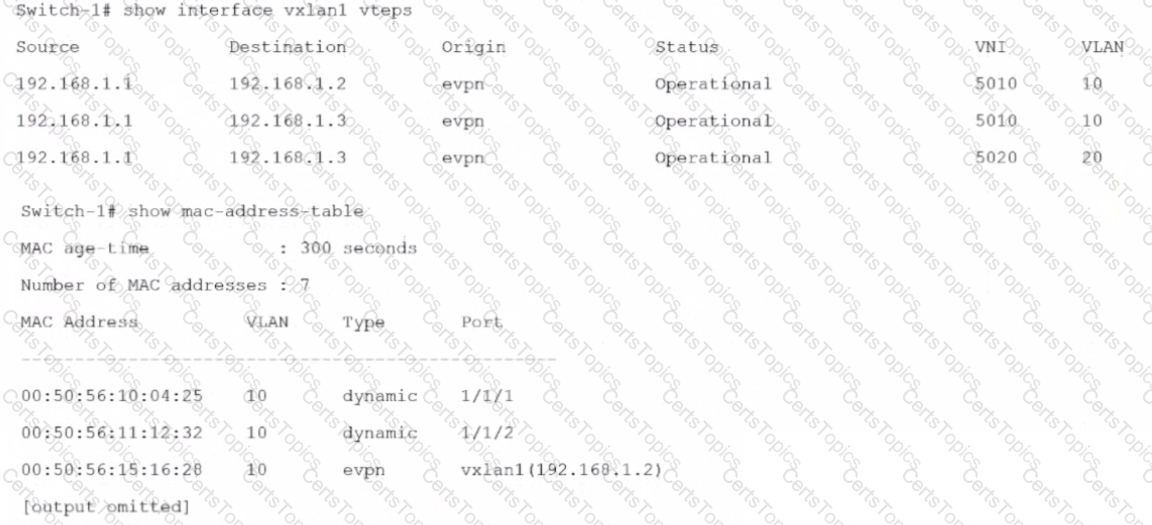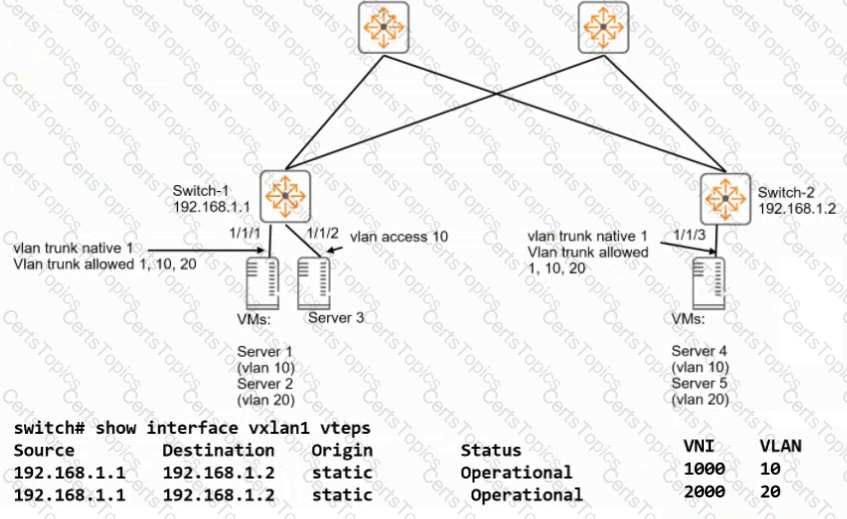The architect designs a spine and leaf network for a single data center that will use multiple leaf switches as Virtual Tunnel End Points (VTEP). The architect needs to select the type of Integrated Routing & Bridging (IRB) for the solution.
Is this statement about the IRB type true?
Solution:Asymmetric IRB requires a third L3 VNI to route packets between ingress and egress VTEPs.
Is this part of a valid strategy for load sharing traffic across the links in an Ethernet Ring Protection Switching (ERPS) ring?
Solution:Combine multiple links between two data centers into link aggregations (but not multi-chassis ones).
Is this part of a valid strategy for load sharing traffic across the links in an Ethernet Ring Protection Switching IERPS) solution?
Solution:Implement Virtual Switching Extension (VSX) on pairs of ERPS switches at the same site.
You plan to use multi-protocol BGP to implement dynamic VRF route leaking on an ArubaOS-CX switch.
Is this a rule for the setup?
Solution:You cannot leak multicast routes.
Is this a use case for deploying Ethernet Ring Protection Switching (ERPS)?
Solution:extending Layer 2 communications between data centers that connect over Layer 3 MPLS links
A customer's servers use ISCSI, and they send data and storage traffic on the same pair of I OGbE links. Is this a best practice for supporting the ISCSI requirements?
Solution:Set up dedicated switches to connect to iSCSl arrays. Connect top of rack (ToR) switches, which will support both data and storage traffic, to those dedicated switches.
Refer to the exhibit.

Switch-1, Switch-2, and the router run OSPF on LAG 100, which is a Layer 3 LAG. Does this correctly explain how to control how core-to-access traffic Is forwarded?
Solution:To reduce the amount of traffic sent over the ISL between Switch-1 and Switch-2. enable Equal Cost Multi Path (ECMP) on both Switch-1 and Switch-2.
Is this a requirement for implementing Priority Flow Control (PFC) on an ArubaOS-CX switch interface?
Solution:configuring trust of Cos on the interface
Refer to the exhibits.


Is this how the switch-1handles the traffic?
Solution:A broadcast arrives in VLAN 10 on Switch-1. Switch 1 forwards the frame on all interfaces assigned to VLAN10. except the incoming interface. It replicates the broadcast, encapsulates each broadcast with VXLAN. and sends the VXLAN traffic to 192.168.1.2 and 192.168.1.3.
Refer to the exhibit.

Switch-1 and Switch-2 ate ArubaOS-CX switches thatimplement VXLAN WITHOUT EthernetVPN (EVPN). Switch-2 uses the same VNI-to-VLAN mappings as Switch-1. Is this how the specified servers communicate?
Solution:The first time that Server I communicates with Server 3, It sends an ARP request to resolve Server 3's MAC address.
Is this how you should position switches in the ArubaOS-CX portfolio tor data center networks?
Solution:Deploy Aruba 83xx switches as data center leaf switches.